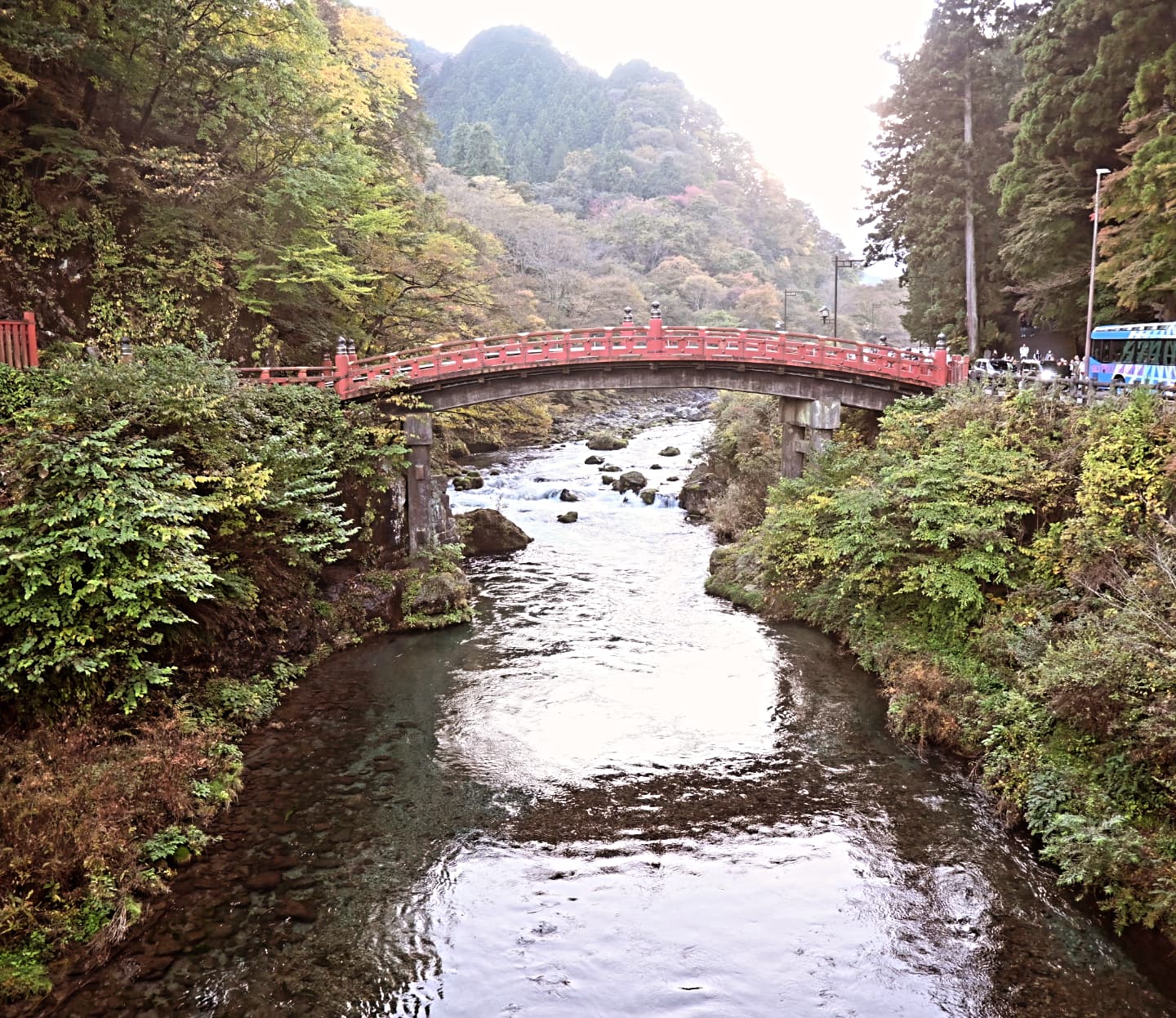Table of Contents
Getting to Nikko
My day trip to Nikko began with the excitement of traveling on the Shinkansen, using the convenient 3-Day Tokyo Wide Pass, which allows unlimited rides on JR trains, including Shinkansen. From Tokyo, I boarded the bullet train to Utsunomiya and transferred to the JR Nikko Line. The entire journey took about two hours, with scenic countryside views along the way.

Arriving in Nikko early in the morning gave me plenty of time to explore its rich cultural sites and natural beauty. Nikko is a perfect mix of history, spirituality, and stunning landscapes, making it ideal for a day trip.
Also we can see mount fuji from the Shinkansen if you are lucky.

Stop 1: Shinkyo Bridge

My first stop was the Shinkyo Bridge, a stunning red-lacquered structure that spans the Daiya River. This historic bridge is one of the most photographed landmarks in Nikko, and its vibrant color contrasts beautifully with the surrounding greenery.
The bridge is considered sacred, marking the entrance to Nikko’s shrines and temples. While you can admire it for free from the nearby viewpoint, crossing the bridge requires a small fee. I opted to walk across for the full experience and snapped some fantastic photos.
Stop 2: Nikko Toshogu Shrine
Just a short walk from Shinkyo Bridge is the Nikko Toshogu Shrine, the most famous site in Nikko. This UNESCO World Heritage Site is the lavish mausoleum of Tokugawa Ieyasu, the founder of the Tokugawa Shogunate.
The shrine is a masterpiece of craftsmanship, with intricate carvings, vibrant colors, and gold accents. Highlights include the Yomeimon Gate, the famous Three Wise Monkeys carving, and the Sleeping Cat engraving. I spent over an hour exploring the grounds, marveling at the architecture and serene forest surroundings.
Stop 3: Kanmangafuchi Abyss
After the grandeur of Toshogu Shrine, I walked to the quieter Kanmangafuchi Abyss, a short distance away. This serene spot features a trail along the Daiya River, lined with rows of Jizo statues, which are believed to protect travelers and children.
Walking along the moss-covered path felt like stepping into another world. The sound of flowing water and the peaceful atmosphere made this one of my favorite parts of the trip. It’s a perfect place to take a break from the crowds and immerse yourself in nature.
Stop 4: Nikko Market Street

By midday, I headed to Nikko Market Street, located near Nikko Station. This charming area is filled with shops selling local crafts, souvenirs, and delicious street food.
I explored stalls offering handmade pottery, traditional sweets, and sake. One of the highlights was trying yuba, a specialty of Nikko made from tofu skin. The soft and flavorful dish was both healthy and delicious. The market’s vibrant atmosphere was a delightful contrast to the serene temples and shrines.



Stop 5: Kegon Falls

In the afternoon, I hopped on a bus to Kegon Falls, located in the Nikko National Park near Lake Chuzenji. The 97-meter-tall waterfall is one of Japan’s most famous and a must-visit spot in Nikko.
An elevator takes you to the base of the falls for a close-up view. The roaring sound of water and the mist in the air made the experience truly magical. The surrounding autumn leaves (if you’re visiting in fall) add a splash of color, making it a photographer’s dream.
Lunch and Local Flavors
For lunch, I stopped at a cozy local restaurant near Lake Chuzenji and ordered yuba soba, a hot noodle dish topped with tofu skin. It was hearty and flavorful, perfect after a morning of exploring.
I also sampled nikko sake, a locally brewed rice wine, and ended the meal with a sweet treat—Nikko manju, a steamed bun filled with red bean paste. The local cuisine added a delicious touch to the trip.
Tips for a Memorable Trip
- Start Early: Nikko has a lot to offer, so catching the earliest Shinkansen is recommended.
- Use the Tokyo Wide Pass: It’s cost-effective and covers all JR train rides to and within Nikko.
- Dress Comfortably: You’ll be walking a lot, so wear comfortable shoes and dress in layers.
- Carry Cash: Many local shops and restaurants don’t accept credit cards.
- Check Seasonal Highlights: Autumn and spring offer stunning foliage and cherry blossoms, while winter provides a peaceful, snowy charm.
My day trip to Nikko was an incredible journey through history, culture, and nature. From the iconic Shinkyo Bridge to the spiritual Nikko Toshogu Shrine, the serene Kanmangafuchi Abyss, and the majestic Kegon Falls, every stop offered something unique.
The convenience of the Shinkansen and the Tokyo Wide Pass made the trip smooth and enjoyable, while the delicious local cuisine added a special flavor to the experience. Whether you’re a history enthusiast, a nature lover, or someone looking for a peaceful getaway, Nikko is a destination that won’t disappoint.
If you’re in Tokyo and planning a day trip, make sure to add Nikko to your list. It’s a place where Japan’s rich heritage and natural beauty come together, creating memories that will last a lifetime.
Would you like more travel recommendations or tips for exploring Japan? Let me know!

